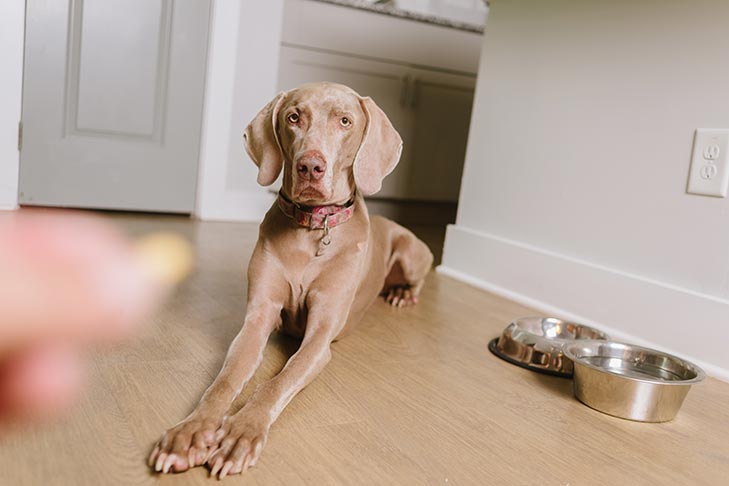How Often Should You Walk Your Dog?

How Often Should You Walk Your Dog?
If you’re not sure how to exercise your dog, you may be wondering: How often should you walk your puppy? How much exercise does an adult dog need? You can find advice about this topic in our articles on Puppies and Exercise. But if you’re not sure how much exercise your dog needs, keep reading! In this article, we’ll discuss how often your dog should be walked, for different age groups.

How Often Should You Walk Your Dog?
How Good Is Walking as Exercise?
While it’s not a replacement for a full workout, walking your dog is an excellent form of exercise. The World Health Organization recommends that children get at least 60 minutes of aerobic activity per day. Adults should engage in at least 30 minutes of moderate activity five days a week. Senior citizens should also engage in two days of strengthening exercise and add flexibility routines to their weekly schedules. As long as you’re consistent, your dog will benefit from a daily walk.
Besides physical benefits, walking your dog can also improve its mental health. Dogs require mental stimulation and exercise, so this is a great way to give them just that. Walking also helps them release excess energy and relax at night. It can also improve their social skills and overall health. Walking is a great way to bond with your dog. It is easy to schedule a walk every day as part of your routine, so your dog will look forward to it!
In addition to being a great form of exercise for your dog, it can also improve your cardiovascular health. Walking strengthens the heart muscle and reduces the risk of heart attacks and clots. Walking with your dog can also help you stick with a fitness routine, as your dog will be sure to keep you accountable! Walking can help strengthen bones, joints, and muscles. And it doesn’t require an enormous amount of space.
When Is It Safe to Walk a Puppy?
The first step in training your puppy to go for walks is to start small and gradually increase the length of your walks. Make sure to take your puppy’s needs into account. For example, if your puppy seems tired, stop walking and let him rest. Likewise, if you see that your puppy is laying down on a walk, pick him up and give him some time to relax. It is natural for puppies to sniff while they are walking, but if you take your puppy for a walk on a long walk, it can cause orthopedic problems in your puppy later on.
The first steps to safely introducing your puppy to walks include taking him for short walks on a paved surface and making sure he has received his final vaccinations. After two to four weeks, you can allow your puppy to go outside and play on its own, but you should always be sure to limit your puppy’s outdoor time until he is fully vaccinated. It’s also important to avoid the dog park or other public places until your puppy is at least 16 weeks old.
How Much Exercise Do Dogs Need? Puppies
As with people, there is no universal rule for how much exercise dogs need. However, there are some general guidelines to follow. To determine how much time your dog needs to exercise, you should start with the age of the dog. Puppies are naturally energetic, but they require time to rest and to nap between sessions. To help you determine the appropriate amount of exercise for your pup, consider the five-minute rule. This rule will determine the amount of time your puppy should spend outside each day .
A healthy adult dog needs approximately one to two hours of exercise per day. While some breeds require more exercise than others, most adult dogs need at least thirty minutes of physical activity each day. Smaller breeds, on the other hand, need a bit less exercise. It’s important to note that your dog’s breed is also an important factor. Large breeds need more exercise than small breeds, while flat-nosed dogs require less. If you can’t exercise your dog enough, make sure to monitor your dog’s health to avoid overexertion.
If you want to make your dog fit into your life, consider buying a small-breed dog. Small breeds require less exercise than large breeds, but they will require a lot of human interaction. However, be sure to keep in mind that small dogs can be easily overworked, so make sure you plan accordingly. You can also look for signs that your dog is overworked, including excessive panting or overheating .
Adult Dogs
How much exercise your dog needs will vary depending on the breed, age, and overall health of the dog. Most adult dogs need thirty to sixty minutes of exercise each day, while smaller breeds may need less. Large breeds, as well as those with high activity levels, should have one to two hours of exercise each day. However, even a thirty-minute walk can help your dog stay fit and well-balanced.
Walking your dog regularly can help prevent urinary tract infections. Regular exercise helps your dog urinate, which drives out bacteria and keeps its bladder regular. Walking a dog outdoors also helps establish a regular bowel movement, which will prevent the development of a urinary tract infection. Besides keeping your dog healthy, frequent walks also help you spot signs of health problems early on. You can schedule a half-hour walk for your adult dog every morning or half-hour walk for a younger dog.
While older dogs require fewer walks per day, they still require moderate exercise. Short walks are sufficient for most adult dogs. If your dog is suffering from joint problems or arthritis, make sure you use pain medications to keep him comfortable during exercise. If your dog has joint problems, keep walking slow and avoid throwing a ball. Fast starts and stops can be tough on the joints and will cause further discomfort. So, make sure you follow your dog’s health and fitness requirements to the letter.
Senior Dogs
As a dog owner, one of the most important considerations for walking a senior dog is its overall health. It will need fewer exercise sessions than younger dogs, but you should still regularly. You can reduce the length of walks and start earlier in the morning if your dog needs more exercise. Make sure you check your dog’s body temperature and look for signs of discomfort. Your senior dog might need a special diet that is more nutritious and will give it energy.
Walking is an excellent exercise activity for a senior dog. Even though they have more mobility limitations, walking at least 30 minutes a day is essential for their health. While a shorter walk is beneficial, a daily activity of your dog can keep its joints active and reduce the risk of joint pain. Senior dogs also need a little bit of exercise, so opt for activities that do not cause too much stress, such as swimming.
If you have the time, you can try to teach your senior dog some tricks. Play games with them such as sit, down, and roll over. You can also introduce puzzle toys to help with their cognitive and physical abilities. Senior dogs can also benefit from mental exercises, such as nose work, puzzle toys, and other mental activities. However, if you’re worried about your senior dog’s joint health, you should consult with a veterinarian to determine whether your dog is still healthy enough to enjoy walks .
Tips for Walking Your Dog
Here are some helpful tips for walking your dog safely. Make sure to pick up your dog’s poop! Most dangerous objects like slippery sidewalks and hot pavement can cause a dog’s paw pads to become damaged. Also, always make sure your dog has a leash, which helps keep most dangers at bay. And remember to take your dog with you on walks so that he can learn road safety. Remember to always carry a water bottle for both you and your dog, and wear reflective clothing if you’re walking in low-light areas at night.
Whenever possible, during daylight hours. Nighttime walks pose particular risks because drivers don’t have the same visibility as they do in daytime. Also, inclement weather can make visibility even less. So, you’ll want to choose a well-lit area. Always carry water and bowls for your dog. It also never hurts to have a flashlight handy to have in case of a mishap.
Ensure your dog gets plenty of fresh air and a good hike. Choose a route that offers a spot to shelter. Although trees can be useful to protect your dog from heavy downpours, they can’t prevent thunderstorms, high winds, or lightning. A gray sky can hide approaching thunderstorms, but don’t leave your dog in the car for extended periods of time. Frostbite can cause severe damage to your dog’s body, including its ears and tail.
What Can You Do Besides Walks For Exercise?
While walks are important for the physical and mental health of your dog, sometimes life gets in the way of going out on a daily basis. This is when it can be helpful to find other exercise options. Other alternatives to walks include hiking, running, and playing fetch. Depending on your dog’s age, weight, and other health conditions, you may have to vary the exercise intensity or schedule.
Adding a ball launcher to the exercise routine is a fun way to keep your dog happy and active. Dogs love to play fetch and can easily be trained to perform the game on their own. Another great exercise for your dog is dog yoga. Doga is a form of exercise that uses music and is practiced by both humans and animals. The key is to be patient and understand the basic principles of dog yoga.
Another great option for dog owners is a treadmill. Treadmills help dogs burn off excess energy and are an excellent way to increase pace over time. Treadmills can also be a convenient option if the weather is bad or you are ill. Some dogs even like using treadmills! For more information, visit the website below. Once you’ve decided which type of exercise is best for you and your dog, try a treadmill .













